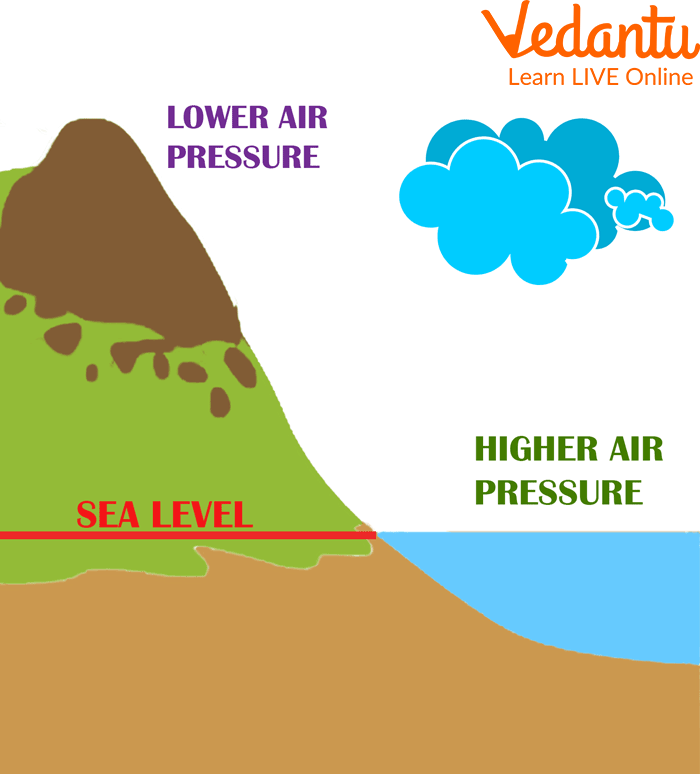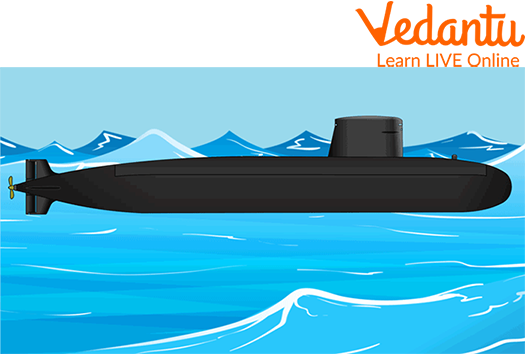




Overview of Air Pressure
Everything in the universe is made up of matter, and we know that all matter has weight. Air is also made up of matter. Does that mean air also has weight? If yes, then why do we not feel it? How does air not crush us?
Air surrounds us all the time, no matter where we go or what we do. Even though we can’t feel the air around us, it is always there, and it exerts a force on us. This force that the air exerts on everything is known as air pressure. The earth is wrapped in a thick blanket of gases known as the atmosphere, which exerts air pressure. In this article, we will answer questions about what air pressure is, what the air pressure at the water level is, how is air pressure underwater, etc.
What is the Air Pressure on the Water Level?
Since the atmosphere is wrapped around the earth and the air molecules in it weigh down on the surface in the form of air pressure. The pressure is highest when you are closer to the surface of the earth. As you go higher up towards the atmosphere, it reduces.
The air pressure exerted by the atmosphere at the water level (also known as sea level) is 14.7 psi, where psi refers to Pounds per Square Inch. Thus, for every square inch on the surface of the earth, the atmosphere presses down 14.7 pounds. This pressure is a direct result of the earth's gravitational force. A very simple explanation is that gravity pulls the air molecules towards the surface of the earth, causing them to weigh down on the surface.

Air Pressure Increases as one Moves Upward
Air Pressure in Water
What happens to air pressure if you are submerged in water? Does air pressure on water have no effect? Or does the air pressure add to the weight of the water molecules?
One unit of atmospheric pressure (14.7psi) is the amount of weight a section of water 10.3m in depth exerts on a submerged body. But the atmosphere also exerts pressure on every square inch of the surface of the earth, including water, so how much pressure is exerted on a submerged body?
A body submerged in water at 10.3m experiences 2 atmospheres. (1 atmosphere of water plus 1 atmosphere of air). In water, the atmospheric pressure increases the deeper underwater the body goes. This is why submarines have special pressurised structures that allow them to float deep underwater. It is also why deep sea divers need special suits, or ship-wreck survivors need to be put in pressurised chambers after being rescued.

Submarines need to have specialised Structures to Survive high Pressure
Uses of Air Pressure
Air pressure has a wide variety of functions. Some of the functions of air pressure are -
The simplest use of air pressure is in aeroplanes or submarines, as they both exist in areas of extreme pressure conditions.
It is used in weather prediction.
Air pressure works in inflating tyres as well as when drinking drinks from straws.
It is also used when playing wind-based instruments.
Interesting Facts About Air Pressure
The instrument used to measure atmospheric pressure is known as a barometer.
Air pressure readings can also be used to predict natural disasters such as tornadoes.
One unit of air pressure is 14.7 psi is also called 1 atm (1 atmosphere).
Water in air pressure exists as a liquid state unless there are changes in temperature. At 100⁰C, it boils to form steam (gas), and at 0⁰C, it freezes to form ice (solid).
If pressure is affected by temperature, gravity, and altitude.
Atmospheric pressure is usually highest when the air is warm and dry.
Summary
Air molecules are all around us, and they all have weight. The atmosphere, which is made up of air, wraps around the earth and weighs down on the surface. In this article, we learned that air pressure refers to this pressure exerted by the atmosphere on the surface of the earth. We also discovered several interesting facts about air pressure, like air pressure on the surface level is 14.7 psi, and it decreases as you go up in altitude.
We also learned that when in water, the weight of the water molecules adds to the air pressure exerted by the atmosphere, so the deeper you go underwater, the more the pressure increases. Air pressure also has multiple uses, such as in making airplanes and submarines, as well as in simple things such as inflating tires and using straws.
FAQs on Air Pressure on Water
1. How are we not crushed by the atmosphere and the pressure it exerts?
Humans or any living thing are not crushed by the pressure/ weight the atmosphere exerts on us, as our bodies have the same amount of pressure inside. The inside of our bodies exerts pressure on the skin, which balances out the pressure exerted on it by the atmosphere.
2. Why is the pressure lower the higher up we go?
As we travel further away from the surface of the atmosphere, the air pressure decreases. Air pressure is highest at sea level. As we travel upwards towards the atmosphere, the pressure drops for two main reasons. One, as we go higher up, the atmosphere gets thinner. Thus, the weight it exerts also gets lower. Two, the temperature also drops as we go higher, affecting air pressure.
3. What happens to water as atmospheric pressure changes, and what is the boiling point of water at normal atmospheric pressure?
As air pressure changes, the state of water, as well as its properties, are affected. When atmospheric pressure increases as we go deeper below sea level, the boiling point of water also increases. If we go higher than sea level or closer to the atmosphere, the air pressure decreases, and the boiling point of water decreases from 100⁰C. The boiling point of water at normal atmospheric pressure is 100⁰C.
4. What is the atmospheric pressure of water?
The atmospheric pressure of water is 14.7psi.









